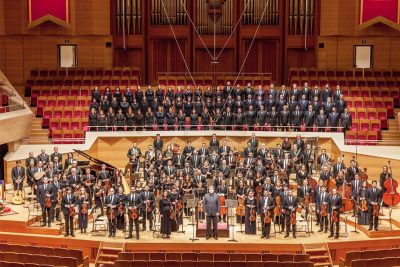Evangelization Mission
«I give you a new commandment: love one another; As I have loved you, so you also should love one another. This is how all will know that you are my disciples, if you have love for one another.» (Jn 13, 34s)
The Holy Spirit has raised in the Neocatechumenal Way various modalities of evangelization, of apostolic mission and of consecration, which have been confirmed and promoted by various Popes of the Church.
Charismas
Parish community of communities
After the announcement of the Kerygma, communities are born in the parish, brothers who live this Christian initiation. Progressively, among them begin to appear the signs of faith, unity and love for the enemy. This moral miracle will call those who are far away to encounter Jesus Christ. The Christian community will bring the love of God to all men.
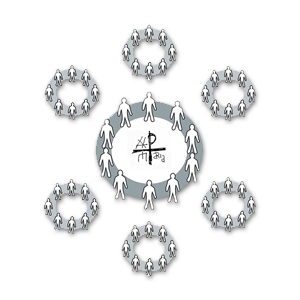
“You not only do the apostolate by being what you are, with an incitement to rediscover and recover the true, authentic and effective Christian values, that otherwise could remain almost diluted in ordinary life. No! You put them in evidence, you make them emerge, and you give them a truly exemplary moral splendor because, well, with this Christian spirit, you live this Neocatechumenal community …
How much joy and how much hope you give us with your presence and your activity! We know that in your communities you work together to understand and develop the riches of your Baptism and the consequences of your belonging to Christ …
Living and promoting this awakening is what you call a form of “post-Baptism” that can renew in today’s Christian communities the effects of maturity and deepening that were happening in the early Church in the period of preparation for Baptism …
You do it after: whether before or after, I would say,it is secondary. The fact is that you look at the authenticity, to the fullness, to the coherence, to the sincerity of the Christian life.”
St. Paul VI, May 8, 1974
“The praxis and norms of the Church have introduced the sacred custom of conferring baptism to newborns, concentrating in the baptismal rite its preparation that, in the early days, when society was deeply pagan, preceded baptism, and it was called the catechumenate. But in today’s social environment, this method needs to be integrated with an instruction, by an initiation to the Christian’s lifestyle, following the baptism, that is, of a religious assistance, of a practical training to Christian fidelity, of an effective insertion into the community of believers, which is the Church …
Here is the rebirth of the name “catechumenate”, that certainly does not want to invalidate or diminish the importance of current baptismal teaching, but wants to apply it with a method of gradual and intensive evangelization, which reminds and renews in a way of the catechumenate of other times. Those who have been baptized need to understand, rethink, and appreciate, to support the priceless gift of the sacrament they have received.”
St. Paul VI, January 12, 1977
Itinerant-Catechists
One of the main charisms or fruits of the Way is that of itinerant-catechists. Thanks to them, it has spread across the five continents. The international responsible team of the Way establish teams of itinerant-catechists – which are usually made up of a priest, a married couple and a celibate/single person; or a priest, a celibate/single man and a celibate/single woman- to be sent to the nations to initiate and guide the realization of the Neocatechumenal Way.
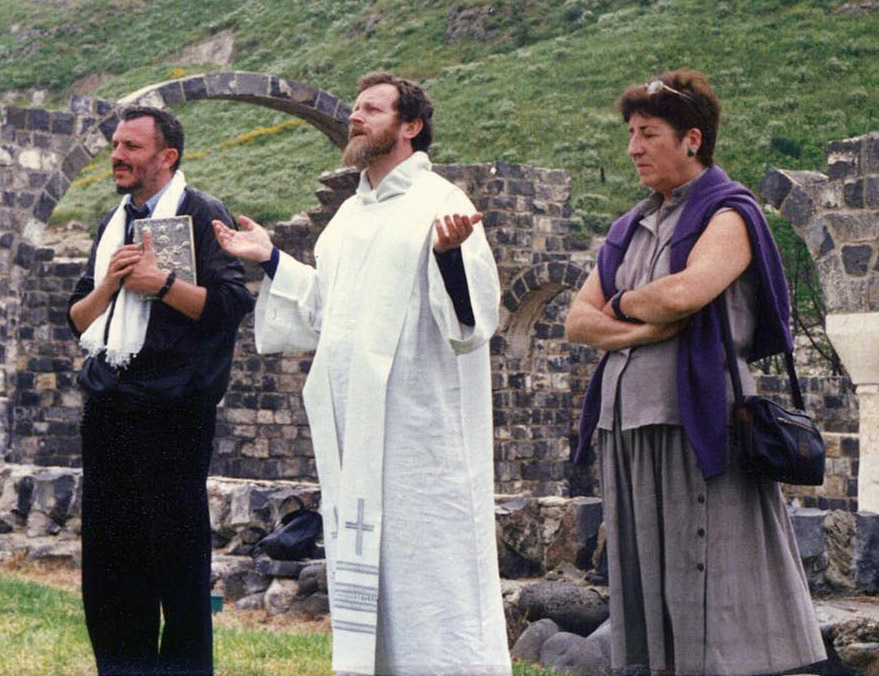
The itinerants respond to the requests of distant dioceses: the international team invites the brothers of the Way to offer themselves to be available to be sent anywhere in the world, and those who feel called by God do so freely.
The itinerants receive this mission in convivences and, in them, the team responsible for the Way, or another indicated, checks the availability and coordinates the activity of the itinerants in a “systole and diastole” dynamic according to the example of the Lord, who sent his apostles on mission and then gathered them together, in a secluded place, to hear the wonders that the Holy Spirit performed with them.
The itinerant-catechist remains attached to their parish and community, to which they return regularly to participate in the Way in the same manner as before. In addition, the itinerant-catechist agrees to live their mission in precariousness, remaining free to interrupt it at any moment, informing the Bishop ad quem and the team responsible for the Way.
Missionary charisms and consecrated life
In the various forms of evangelization carried out by the Way, the presence of celibate men and women with missionary vocations is necessary to sustain, accompany and evangelize both in the missio ad gentes and itinerant-catechist teams, and in the seminaries and parishes. Therefore the men and women who, living this itinerary of faith, feel this call from God to give their lives to the New Evangelization, are sent out in international convivences.
In addition, since the beginning of the Neocatechumenal Way, hundreds of girls starting this Christian initiation have felt the vocation to the consecrated life and have entered in different monasteries around the world.
Diocesan-missionary Seminaries Redemptoris Mater
On the 26th of August,1986, St. John Paul II enthusiastically welcomed the proposal of Kiko, Carmen and Father Mario to institute a Diocesan Missionary seminary in Rome for the formation of priests for the New Evangelization and commissioned Cardinal Ugo Poletti, Vicar of His Holiness, to erect it.
Since then, 122 seminars have been erected, which have 3 fundamental characteristics: they are diocesan, missionary and international. Within the academic, human and spiritual formation of these seminaries, there is a period of missionary evangelization, and once ordained priests – after a few years of working in parishes – the diocesan bishop may allow them to leave the diocese to serve in the various mission modalities carried out by the Neocatechumenal Way, according to what is established and approved by the Vatican in the Statutes.
The seminary is erected by the bishop of the diocese and welcomes young men who have discovered the vocation thanks to the neocatechumenal itinerary of Christian initiation. In the seminary, the Christian formation through the Neocatechumenal Way in a community is a distinct and basic element of the formation course.
In the years following, numerous bishops have followed the example of the Holy Father by opening other seminaries.
Since 1990, the year of the first ordinations, up until today, the priests ordained in these Redemptoris Mater seminaries are about 2,380. Currently, there are 2,300 young men that are preparing for the sacred ordination.
Families in mission
In 1985, Kiko, Carmen and Father Mario presented to St. John Paul II a project – welcomed with great enthusiasm on his part – to reevangelize northern Europe by sending missionary families accompanied by a priest. In 1986, the Pope sent the first 3 families: one to the north of Finland, another to Hamburg (Germany) and the third to Strasbourg (France). In 1987, the first 3 families were sent to the so-called “young towns” of Latin America.
On December 30, 1988, St. John Paul II arrived by helicopter at the International Center of the Neocatechumenal Way in Porto San Giorgio to send 72 families throughout the world. “Holy Church of God, you cannot fulfill your mission, you cannot accomplish your task in the world if not by the family and its mission! Family in mission, Trinity in mission! The Holy Family is nothing other than this: the human family in divine mission. Family in mission, Trinity in mission! You should help the family, you should protect it from all destruction”, said St. John Paul II on that day.
Since then, almost 1,800 families have been sent by the last Pontiffs to the five continents to evangelize with their testimony of Christian life in the image of the Holy Family of Nazareth and through various missionary tasks.
They are families, many rebuilt, that after years in this post-baptismal formation itinerary are grateful for the work of salvation that God has worked in them. These families, most with several children, offer to go in mission, leaving the comfort of their places of origin. They leave on mission to where bishops see the need for a Christian family’s testimony, living and taking root in the local churches and performing various evangelizing tasks, participating in the implementation of new Christian communities.
In the Statutes of the Way, it is indicated that the realization of the Neocatechumenal Way can be assisted by families on mission that, at the request of the bishops, are established in de-Christianized areas or where an “implantatio ecclesiae” (Art. 33) is necessary. ([Families in Mission], Statutes of the Neocatechumenal Way, May 11, 2008)
Missio ad gentes
In 2006, Benedict XVI inaugurated this new form of evangelization by sending the first 7 missio ad gentes. Each of them is made up of a priest, accompanied by 4-5 families with several children. At the request of the bishop, the family receives the mandate to evangelize de-Christianized or pagan areas, with the mission to make present a Christian community in which “to be perfectly one for the world to believe.”
St. John Paul II, in the VI Symposium of European Bishops of 1985, indicated that to respond to the secularization of Europe, it was necessary to return to the first apostolic model.
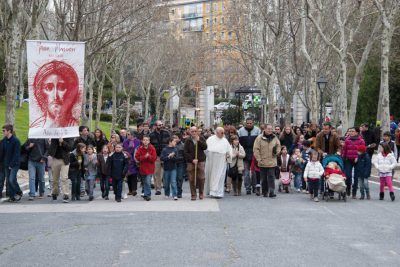
Thus, these missio ad gentes, in imitation of the domus ecclesiae, gather in the houses in the midst of the unbaptized and those far from Christianity.
Twelve years after the first families were sent, the result is that many remote and pagan people, who had never entered a church, get close to these Christian communities and begin a itinerary of conversion or begin to approach faith.
These communities – which do not start from a holy places, but live in midst of the world – constitute a true “courtyard of the Gentiles where men can approach God without knowing him ”, as Benedict XVI pointed out in the speech to the Roman Curia in the year 2009.
An extraordinary element of this experience are the fruits of communion and unity that occur within one’s own family, between parents and children.
On March 18, 2016, Pope Francis sent 250 families forming 50 new missio ad gentes for the five continents. During this meeting, Pope Francis himself explained what this missionary modality consists of: “the missio ad gentes are created at the request of the bishops of the dioceses to which they are destined and are made up of 4-5 families – most of them with more than four children – a presbyter, a young man and two women. They all form a community that has the mission of giving the signs of faith that attract men to the beauty of the Gospel” he said .
Pope Benedict XVI, from 2006 to 2012, sent 58 missio ad gentes and Pope Francis has sent 128.
On May 5, 2018, at the international meeting for the occasion of the 50th anniversary of the birth of the first community of the Way in Rome, celebrated in Tor Vergata, Pope Francis sent 34 new missio ad gentes.
The number of families in the Way that are in mission for the new evangelization is 1,668, with about 6,000 children, in 108 countries on 5 continents, including the 216 missio ad gentes in 62 nations.
Communities in mission
In the meeting with Benedict XVI in St. Peter’s Basilica on January 10, 2009, for the occasion of the 40th anniversary of the birth of the first neocatechumenal community in Rome, the first 15 communities were sent by the Holy Father to the periferies of Rome.
These communities were willing to leave their parish – where they had already finished the neocatechumenal itinerary – to go in mission to difficult areas of the periphery at the invitation of the parish priests, degraded areas with a lot of violence, drugs, destroyed families, newly arrived immigrants.
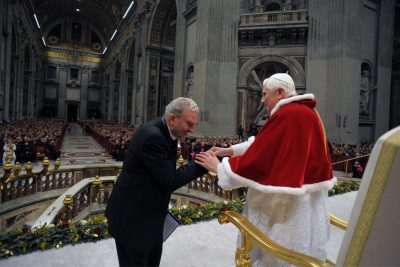
Kiko, presenting this new mission, noted that “the Way ends by announcing the Gospel throughout the world”. “One of the biggest novelties is that the whole community goes on mission. Not that just some brothers go, but the whole community. It is a great grace and something wonderful that God sends you on this mission. It is great to be able to leave, that the Lord gives you a mission; die in the mission, grow old in the mission.”
Precisely, Pope Francis in his encyclical Evangelii Gaudium speaks of a Church “on the way out” and expresses the need to evangelize territorial and existential peripheries.
Also the diocese of Madrid, where the Way was born and is present in 45 parishes with 221 communities, speaks of this experience. In 2011, the then Archbishop of Madrid, Cardinal Rouco Varela sent the first 10 communities on mission.
The current Archbishop of the capital of Spain, Cardinal Carlos Osoro Sierra, in a meeting on March 22, 2015, sent out 8 new communities. In Madrid, there is a total of 18 communitates in missionem.
On May 5, 2018, for the occasion of the 50th anniversary of the birth of the first community of the Way in Rome, in a great meeting in Tor Vergata, Pope Francis sent 25 communities in mission to various parishes in Rome to sustain and strengthen the Christian life of parish communities that were most deprived.
“Today, in this “go” of Jesus, there are present the ever new scenarios and challenges of the evangelizing mission of the Church, and we are all called to this new missionary “departure”. Every Christian and every community will discern which is the way the Lord asks, but we are all invited to accept this call: leave your own comfort and dare to reach all the peripheries that need the light of the Gospel.”
Stages of the Way

New aesthetic
Iconography and stained glass
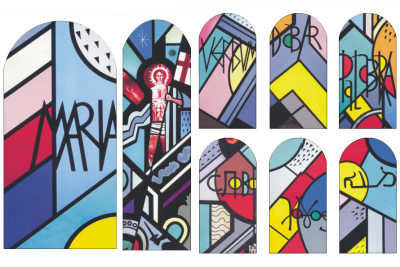
The paintings of the Neocatecumenal Way
Kiko Argüello studied Fine Arts at the Academy of S. Fernando de Madrid and in 1959 received the Premio Nacional Extraordinario de Pintura. In 1960, together with the sculptor Coomontes and the glassmaker Muñoz de Pablos, he founded the art research and development group called Arte Sacro “Gremio 62”. They held exhibitions in Madrid (Biblioteca Nacional), and represented Spain, appointed by the Ministry of Cultural Relations, at the Universal Exhibition of Sacred Art in Royan (France) in 1960. He exhibited some of his works in Holland (Gallery “Nouvelles images”).
Corona Mistérica
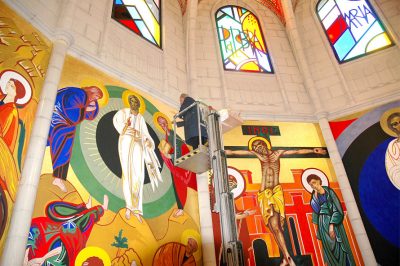
«Only a new aesthetic will save the Church». The images of this «mystic crown» want to influence the depths of the spirit of the faithful that contemplates it. They are intended to help man rise to God. These paintings act in the soul of the Christian as in the Transfiguration, where the apostles perceived the brightness of the divine light over Mount Tabor. Like him, they hear the Word of God and especially in the liturgy, these images, in a direct, immediate and more emotional way, want to help the spiritual transformation of the faithful. St. John Damasceno, who defended the icons against the iconoclastic force and was proclaimed as Doctor of the Church by Pope Leo XIII, said: «I have seen the human image of God and my soul has been saved».
May the Holy Face of Christ help you to witness his love.
Kiko Argüello.
Architecture
The architecture of the Neocatecumenal Way
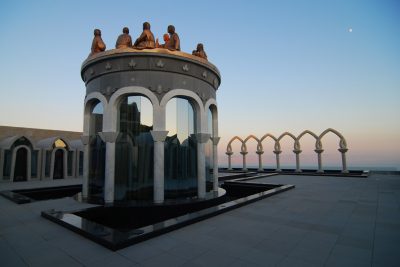
Throughout history, the Church has always perceived this connection between beauty and evangelization and the Church has been the largest patron of beauty. Everything reflects the beauty of Christ and the beauty of the community and of the fraternal communion. The evangelization of the Slavs took place in large part through the beauty of the liturgy, of the icons and the songs. Only in recent years, including within the Church, does a functional vision appear that reduces the places where the community lives and where they meet in simple meeting rooms.
However, today more than ever, is it necessary and urgent that the structures of the Church be renewed. The response to the global village, to the big city, to a monoculture, is a parish that becomes a “celestial village”, a more human social model, capable of opening spaces for the new civilization of love, a Eucharistic assembly that favors the active participation of the faithful, a reality of community of communities with a catechumenium composed of beautiful liturgical rooms for celebrations in small communities.
In the five continents you can find works designed by Kiko within the new aesthetic: the Redemptoris Mater Seminaries, new parishes, catechumeniums, rooms for community celebrations, etc.
Sculpture
The sculpture of the Neocatecumenal Way
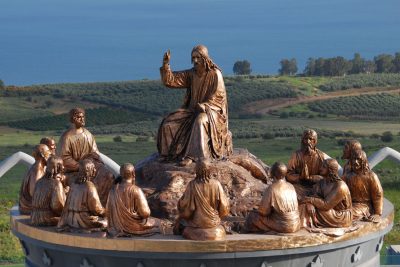
Dostoyevsky wrote “Beauty will save the world”. Beauty, as you know, is a transcendental of the being, along with goodness and truth. Because, as St. Thomas says, all reality is one, is true, is authentic. But for me, I like to relate beauty to pleasure. The aesthetic emotion, beauty, gives us pleasure, it gives us an emotion. Therefore God, in some way, has created nature. He who created nature, He has made it beautiful to give us pleasure.
Pleasure is in relation to love. And it is interesting, for me as a painter, as I have studied the laws of harmony, that everything in nature is related and is in function of beauty. Not everything is beauty, in a certain sense, but the laws of harmony are in a relationship of matter, form … It’s curious, the science that studies relationships is mathematics, so in harmony there are a whole series of equations that are mathematical. Already in art, Plato talked about the geometry and the mathematics of creation. In art, be it in painting, be it in sculpture, be it in music, whether in poetry, everything is in a relationship, relationships that are harmonious.
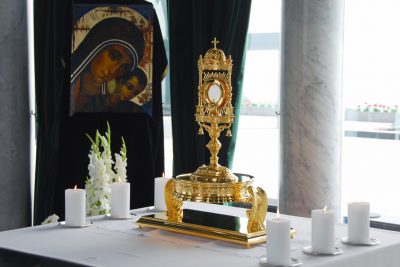
This mathematical relationship that exists within harmony also exists in time, exists in music. Music is very important because it teaches us beauty in time. Each note values the following in time, in painting every element matters, every smoothness, every material, each design, values the other. For example, Beethooven’s fourth symphony, begins with a dissonance. This is wonderful. Regarding time, valuing time, let us say that there is … Let’s not talk about poetry, the word, the sculpture. For example, Henry Moore, an English sculptor, has studied human bones, has seen that the bones of man … the cavity of the femur is perfect. That cavity is perfect for a joint function and at the same time it is aesthetic, totally It has an aesthetic curve, beautiful, it’s very difficult. The curve of a seal’s neck is wonderful. Regarding animals, not just any curve is aesthetic. Moore takes those cavities, studies them and makes a sculpture of curves, because a curve of a certain type corresponds to another protuberance of another type to be aesthetically pleasing, because everything is in relation.
Let’s say that in aesthetics there is a deep secret, which is love.
Kiko has designed many objects for the liturgy: chalices, patenas, censers, covers for the Bible, ornaments … he has also made many sculptures: Sermon on the Mount, St. John Paul II, Jesus Christ crucified, fawns, etc.
Books
Biographical notes – Carmen Hernández
Buy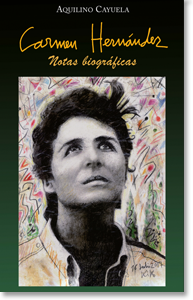
In these biographical notes you are going to see an exceptional woman, very important for the Church, in love with Christ, with Scripture and with the Eucharist. She was clearly aware that God had given her the mission to support, defend and correct me, for the good of the Neocatechumenal Way.
I thank God for Carmen who has always told me the truth, constantly. She was very smart, a profound, authentic and free woman in her relationships with everyone. She loved Christ and the Church and the Pope, above all else.
We believe that Carmen is with the Lord, she is already in heaven. These biographical notes are not only for the brothers of the Way, but for the whole Church, to make known an extraordinary woman, who has lived the faith to a heroic degree. Carmen Hernández! (Kiko Argüello).
This is the first official biography of Carmen Hernández. On the occasion of the fifth anniversary of the death of Carmen Hernández, July 19, 2021, Biblioteca de Autores Cristianos (BAC) published her first official biography, written by Dr. Aquilino Cayuela Ph.D.
The Kerygma. In the shacks with the poor
Buy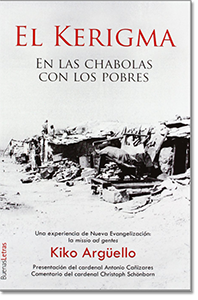
“I have wanted to write this little book per a request of Cardinal Cañizares, who thought it was important to say something about what the Lord has done with us in the shantytowns, with the poor, and also to publish a kerygma that could be a help, especially with the contents and the anthropology, to the Synod on the New Evangelization.” Kiko Argüello.
Cardinal Cañizares: “This book is a true gift from God, which encourages and supports us in faith, dispels fears and fills us with courage.”
Cardinal Schönborn: “In this catechesis, the entire proclamation of the Gospel is condensed in an impressive way.”
Annotations 1988-2014
Buy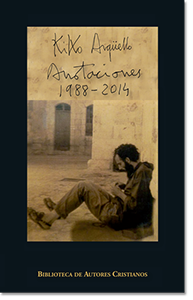
“Since almost thirty years ago, I have been writing in notebooks, in a sporadic and irregular way, and without any specific intention, some thoughts, reflections, maxims, memories, considerations, notes, prayers, soliloquies, etc., raised in me during the mission of evangelization and catechesis to which the Lord has called me in the Church, along with Carmen Hernández and Father Mario Pezzi. If these annotations can help someone, blessed be God.”
“The book is formed by small literary pieces which can be read without connection to the previous or the next. They are reflections from an event, a convivence or a gathering; spiritual jolts of announcement or denunciation; interpellations or calls to hope to which the reader feels connected; sometimes they are bold secrets that sprout from the soul of the author; sometimes they are a kind of hymn or psalm, of ardent supplications and of vibrant thanksgiving to God. From the data the small writings contain, you can somehow follow the historic thread from 1988 all the way to 2014. It is united more by the history of faith of its author and of the Neocatechumenal Way than by a thematic development, although many contents of the specific charism appear dispersed. It is a story full of joys and sufferings; it is evident the fight of the author to faithfully carry out the assignment received from God” († Mons. Ricardo Blázquez Pérez, Cardinal Archbishop of Valladolid).
Diaries 1979-1981
Buy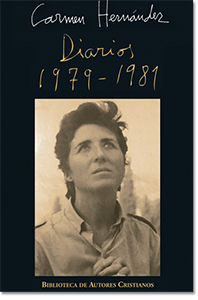
“It rains, but the day dawns serenely. Jesus, I am surprised. Thank you. The suffering has put mercy in my heart. Thank you, Jesus. Peace, joy….” Carmen Hernández, Valle de los Caídos – Madrid, January 27, 1979.
“Fifty years without stopping for a moment, of travel, of scrutinies, of visits to so many communities in Madrid, Zamora, Barcelona, Paris, Rome, Florence, Ivrea… Listening and listening to each brother about his life, his sufferings and his history, enlightening it through the light of faith, of the glorious cross of Our Lord Jesus. I think that you have the right to know Carmen’s heart, her immense love for Jesus Christ. She would say constantly: «My Jesus, I love you, I love you. Come, come, help me.” (Kiko Argüello).
The Neocatecumenal Way
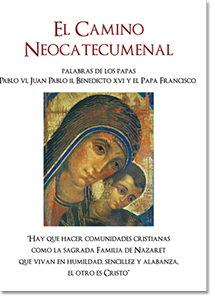
Words from the Popes : Paul VI, St. John Paul II, Benedict XVI and Francis.
The first apostles, in small teams of evangelization, traveled the synagogues announcing the Good News: God has raised his servant Jesus, the one of whom we have rejected, asking pardon for a murderer; he who died without opposing resistance, without resisting evil, loving his enemies, excusing them (“Forgive them because they don’t know what they are doing”); he who offered the evil that they inflicted on him – torture and the cross – as proof that his love was greater than death and never ceasing to love them, even if they took away his life: God has raised him from the dead and today He is alive, to forgive this and any other crime.
“Our time needs to resume the building of the Church, almost psychologically and pastorally, as if beginning again from scratch; so to speak, to regenerate.” Pope Paul VI, August 4, 1976.
Songs of the Neocatecumenal Way
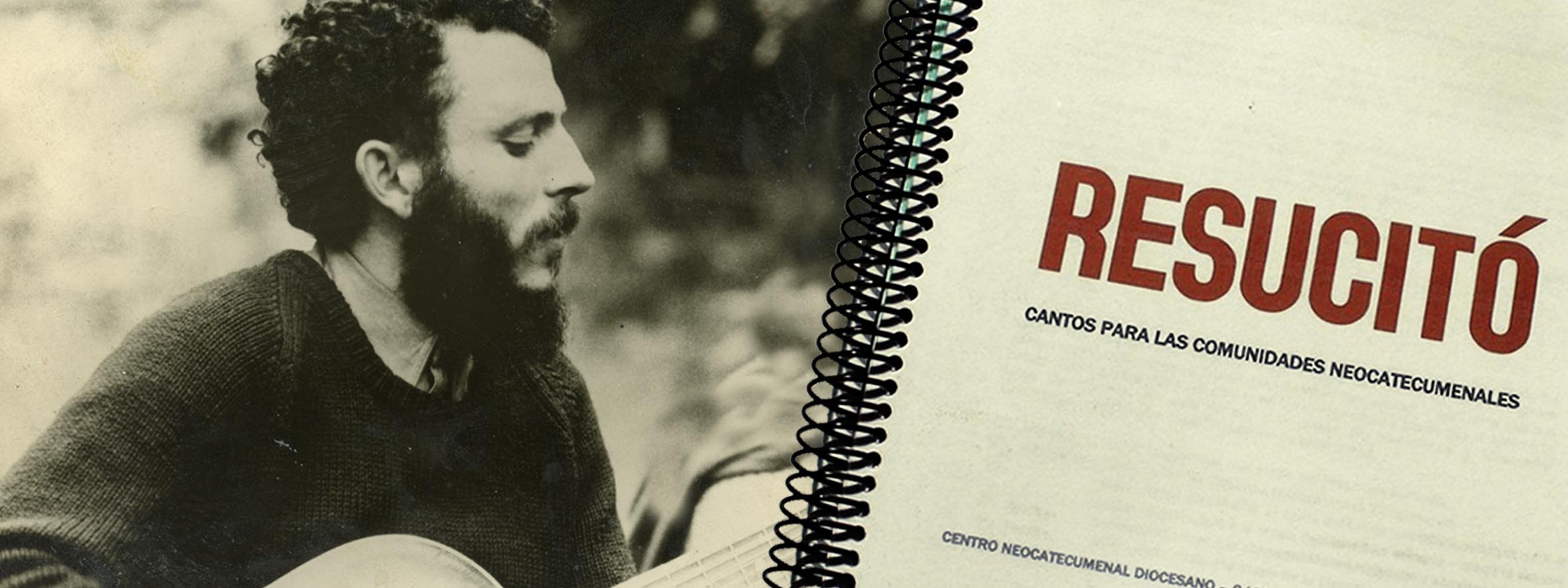
Revised by the Neocatecumenal Diocesan Center of Madrid. The book of songs is edited in different colors to differentiate the gradual stages of the Way. The psalmists must choose the songs, according to the stage of the Way in which the Community is and wait for the Catechists to transmit the songs of the different convivences and Steps of the Way, in this way the brothers can understand the meaning of each song.
Orchestra
The Symphony Orchestra of the Neocatechumenal Way has been founded as a service of the Neocatechumenal Way to the evangelization through music.
